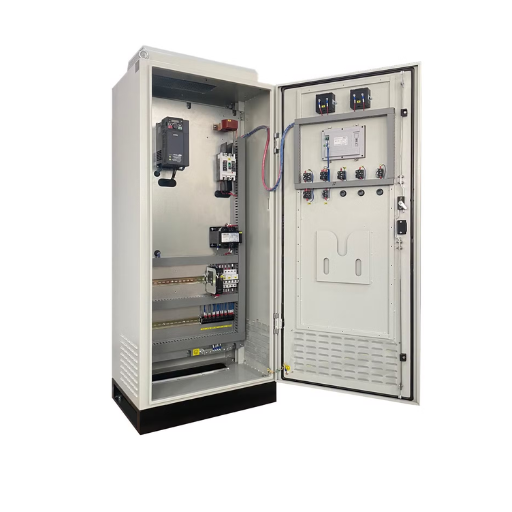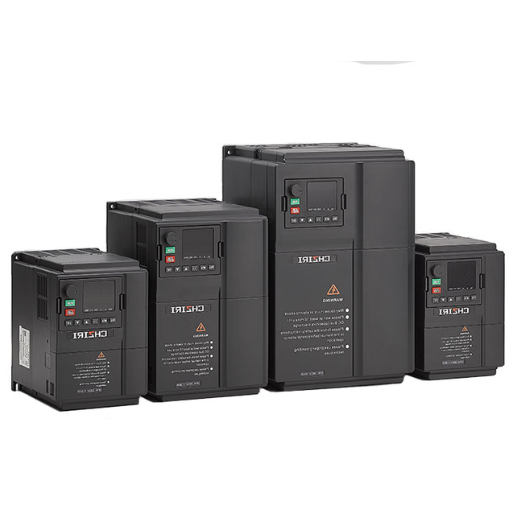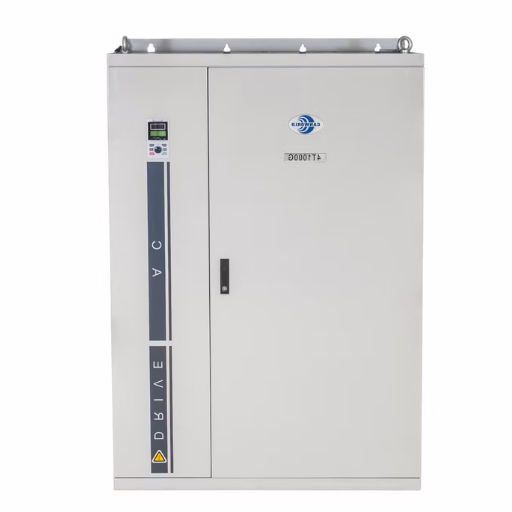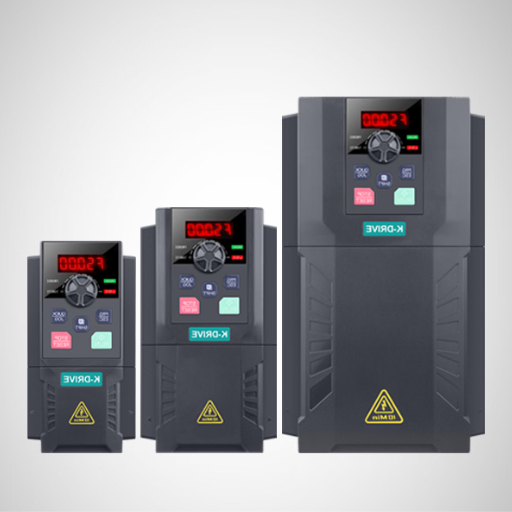Knowing the distinction between a high-voltage frequency converter and a VFD can be crucial for professionals working in industries that depend on advanced motor control systems. The two devices are supposed to regulate motor speed and conserve energy, but their application, capabilities, and technical features differ dramatically. This blog post aims to lay out this difference in technicalities by delving into their functioning, benefits, and potential applications. Suppose you are an engineer weighing alternatives for an industrial installation or want to know how these devices work. In that case, this guide should clarify the idea and help you make better-informed decisions.
Understanding Frequency Converters and VFDs

Frequency converters and variable frequency drives (VFDs) alter motor speed by varying the frequency of power supplied. Clarifying their distinction, the main difference in purposes is as follows:
- Frequency Converters convert power frequency to accommodate differing electrical standards or allow equipment to be operated at preferred frequencies. This equipment is usually used in applications where frequency needs to be regulated accurately, such as combining machinery with systems with different power supply frequencies (e.g., from 60Hz to 50Hz).
- Variable-frequency drives are made specifically to control the speed and torque of electric motors by varying frequency and voltage. They are controlled in industrial, commercial, and HVAC applications to save energy, improve motor performance, and minimize motor wear.
Although both save energy and increase operational efficiency, their specific applications will depend on the system’s demands.
Definition of Frequency Converters
Frequency converters are electrical devices that change the frequency of a particular power supply to become compatible with a system operating at a different frequency (for example, one at 60 Hz and another at 50 Hz) or save energy for some applications.
Definition of Variable Frequency Drives (VFDs)
The Variable Frequency Drive (VFD) is an electronic device that controls the speed and torque of an electric motor by varying the frequency and voltage supplied to the motor. Thus, it ensures and improves energy efficiency and performance over a diverse range of applications.
Key Components of VFDs and Frequency Converters
VFDs and converters possess some essential parts that give the unit its necessary technical operation, efficiency, and adjustability as demanded by an industrial setup. A brief description of the main components of a VFD and its functions goes as follows:
- Rectifier
The rectifier converts the supplied AC power into DC. It may consist of SCRs/silicon-controlled rectifiers or diodes for efficient AC-to-DC conversion.
- Example Information: Modern rectifiers convert energy at 98 percent efficiency, thus losing less energy during conversion.
- DC Link
The DC link stabilizes the rectifier’s output DC voltage using a capacitor or an inductor, providing a stable and smooth supply to the inverter.
- Example Information: Good-quality DC links result in low voltage ripples, reducing harmonic distortion and increasing the motor’s life.
- Inverter
Operating implementation of the conversion of the DC power into a controlled AC power of varying frequency and voltage, corresponding to the requirement of speed and torque control of the motor. The power transistor commonly used for high-speed switching is IGBT, standing for Insulated Gate Bipolar Transistor.
- Example Information: With IGBTs, new advanced inverters run at switching frequencies of 20 kHz and give motors extremely precise control and highly reduced noise.
- Control Unit
The control unit controls the entire system’s operation and manages the rectifier, DC link, and inverter processes. It is equipped with a microcontroller or a digital signal processor (DSP), allowing for modification and precise motor control.
- Example Information: Modern control units feature AI algorithms that help optimize energy consumption and promise an energy efficiency improvement of up to 15% in certain industrial applications.
- Cooling System
Both VFDs and frequency converters generate heat when in use. Therefore, these methods must provide a good cooling system with filters, fans, heat sinks, or liquid cooling systems.
- Example Information: Liquid cooling systems are very advanced and are said to increase reliability by at least 30% compared to traditional air-cooling systems.
- Filters
EMC filters and harmonic filters ensure that VFDs and frequency converters do not emit permissible disturbances to the power line or the environment.
- Example Information: EMC filters reduce EMI by as much as 60% to comply with international standards, such as IEC 61800-3.
In effect, these components together enhance the efficiency of these VFDs and frequency converters and make them highly reliable and adaptable for applications in HVAC, industrial manufacturing, and renewable energy systems.
Technical Differences Between Frequency Converters and VFDs

|
Key Point |
Frequency Converters |
Variable Frequency Drives (VFDs) |
|---|---|---|
|
Primary Function |
Converts AC frequency |
Adjusts motor speed and torque |
|
Voltage Adjustment |
Rarely adjusts voltage |
Adjusts both frequency and voltage |
|
Application |
Frequency conversion for export |
Motor performance improvement |
|
Reliability |
More reliable for frequency adjustment |
Less reliable with non-linear loads |
|
Noise and Vibrations |
Minimal |
High vibrations and electromagnetic noise |
|
Energy Efficiency |
Not a primary focus |
Reduces energy consumption |
|
Use Case |
Exporting products internationally |
Enhancing machine performance |
|
Risk of Damage |
Low |
High with temperature changes |
Operating Principles
The fundamental operating principle common to both frequency converters and variable frequency drives (VFDs) tries to control the electric motor’s supply frequency or voltage and its speed or torque. The principle is carried out in three mini-stages in series:
- Rectification Stage:
The input AC power is rectified and converted into DC power. In modern times, this rectifier is built with semiconductor tools like insulated gate bipolar transistors (IGBTs) working efficiently, so energy loss is minimal.
- DC Link:
Here, the direct current is smoothed over and temporarily stored in a DC link, an assembly of capacitors or inductors. This stage smoothes out fluctuations in power supply; therefore, the output has diminished ripple and a steady energy flow. For example, advanced actual capacitors have reduced power loss by 40% in the last few years, thus prolonging system life.
- Inversion Stage:
During this stage, the stable DC power is turned back into AC power with the chosen frequency and voltage. A popular pulse width modulation (PWM) method is applied for fine control of output frequency and voltage, allowing higher accuracy of motor controls and energy savings. According to new research (Power Labs), using advanced PWM techniques on VFDs can boost motor efficiency by 25% and greatly diminish noise.
Advantages of Modern VFDs and Frequency Converters
Frequency converters and VFDs are upgraded to increase their reliability and performance capacity. Systems with AI-driven algorithms for optimizing motor performance have proven to save up to 30% energy in industrial setups, mainly HVAC and manufacturing. Being equipped with IEC 61800-5-1 compliance ensures that international conventions for safety and suitability are in place.
In effect, harnessing these operational principles, frequency converters and VFDs allow for crisp control of processes run by motors, thus putting them to work across many sectors.
Control Mechanisms
Frequency converters and VFDs use certain central control principles to enable motors’ efficient and accurate functioning. These mechanisms coordinate motor speed and torque with the demands of particular applications, thus improving performance while conserving energy. The following are the five primary control mechanisms:
V/F (Voltage/Frequency) Control
Under this control method, a set ratio between voltage and frequency is maintained to ensure steady motor operation. This mode is also suitable for fan and pump applications where the load remains relatively constant.
Vector Control
Independently controlling the magnetic field components of the motor can accurately control speed and torque. Such control is necessary in high-performance applications such as robotics and CNC machinery.
Direct Torque Control (DTC)
Rapid torque response is granted, as well as precise speed control, with DTC without feedback devices. It is mainly employed to deal with complex applications such as conveyors and cranes.
Sensorless Control
Eliminating external sensors reduces cost, as motor parameters are computed from electrical measurements. This also benefits reliability, especially when used in a remote or hard-to-reach environment.
Closed-Loop Control
Closed-loop control relies on sensor feedback to monitor and regulate the motor continuously. It is the control mechanism required in precision applications, such as elevators and high-speed spindles.
Each control mechanism has a description and is selected according to the motor-driven system’s demands and operating conditions.
Power Supply Variations
For power fluctuating, I weigh the actual voltage and current requirements of the motor-driven system. I look at whether the system needs an AC or DC supply, along with the consistency and quality of the available power source. If the environment is prone to fluctuations, I might recommend the integration of stabilizers or converters, for instance, to ensure the motor’s good working. This particular approach ensures that motors work well under variations in power supply.
Applications of High Voltage Frequency Converters and VFDs

|
Key Point |
High Voltage Frequency Converters |
Variable Frequency Drives (VFDs) |
|---|---|---|
|
Energy Systems |
Wind turbines |
Solar panel systems |
|
Industrial Use |
Exporting products internationally |
Manufacturing and processing plants |
|
HVAC Systems |
Not applicable |
Fan and pump balancing |
|
Water Systems |
Not applicable |
Pressure booster pumps |
|
Motion Control |
Not applicable |
Conveyor systems |
|
Refrigeration |
Not applicable |
Refrigerator compressors |
|
Oil/Gas Industry |
Not applicable |
Compressors for stable performance |
|
Swimming Pools |
Not applicable |
Filtration systems |
Industrial Applications of Frequency Converters
Frequency converters are essential in speed and power control of motor-driven systems in various industrial applications. Here are some application fields in more detail:
- Pumps and Fans
Frequency converters are primarily used to regulate pump and fan systems’ speed and flow rate for energy-saving purposes. They can make speed changes corresponding to short operational requirements without mechanical throttling, reducing wear and tear on the system and components. For example, energy savings can be as high as 50 percent with the variable speed control of HVAC systems.
- Conveyor Systems
Material handling involves several processes in industries such as manufacturing, mining, and logistics. Frequency converters provide smooth speed adjustment to synchronize two or more conveyors and avoid overloading and jamming the system.
- Cranes and Hoists
Frequency converters allow speeds and torques to be adjusted and controlled in cranes and hoists, which have safety and efficiency implications. They also provide smooth acceleration and deceleration, thereby reducing mechanical stress and enhancing the positioning accuracy of heavy loads.
- Textile Machinery
Machinery requires high torque at low speed for various spinning and weaving operations. Frequency converters provide the required continuous motor control, resulting in consistency of quality and uniformity of fabrics. They also help save energy and reduce downtime in production cycles.
- Metal Working
Frequency converters are essential in metalworking for rolling mills, cutting machines, and presses. They offer very precise control of motor speed, hence best efficiency of production and best quality of product, at the same time considerably reducing electrical consumption.
These applications tell a story of how frequency converters have enabled operational excellence, energy efficiency, and equipment life across various industrial domains.
Common Uses of Variable Frequency Drives
Variable Frequency Drives (VFDs) find applications to improve motor operation and energy efficiency in most areas. Here are five examples of VFD uses, along with application details and their benefits:
- Building HVAC Systems:
VFDs play a crucial role in the HVAC system, determining the exact speed of the pump, fan, or compressor. These applications allow energy savings of up to 30-50%, while temperature and airflow are accurately controlled.
- Water and Wastewater Pumping:
VFDs modulate motor speeds in pumps used in water supply and wastewater treatment plants to meet process requirements for different flows and pressures. By maintaining gentle acceleration and deceleration during start and stop cycles, VFDs prevent water hammering effects, thus reducing maintenance requirements and improving system reliability.
- Conveyor Systems in Manufacturing:
In a manufacturing environment, VFDs change conveyor belt speed to match production requirements, thereby increasing operational flexibility and product handling while decreasing wear on the components.
- Metalworking Machinery:
VFDs are used in metalworking processes in cutting machines, rolling mills, and presses. Accurate speed control enhances output quality and safety while decreasing energy consumption, making production more sustainable and productive.
- Energy Recovery in Renewable Energy Applications:
VFDs serve a vital function in renewable energy, including wind and hydro. They vary the generator’s rotational speed to maximize energy absorption and ensure stable power delivery to the grid, hence enhancing efficiency and sustainability.
These are just some examples of how VFDs have improved process control, saved energy, and met the requirements of modern industrial and commercial activities.
Comparative Analysis of Applications
|
Key Point |
High Voltage Frequency Converters |
Variable Frequency Drives (VFDs) |
|---|---|---|
|
Primary Function |
Converts the AC frequency |
Controls motor speed and torque |
|
Energy Systems |
Wind turbines |
Solar panel systems |
|
Industrial Use |
Exporting products internationally |
Manufacturing and processing plants |
|
HVAC Systems |
Not applicable |
Fan and pump balancing |
|
Water Systems |
Not applicable |
Pressure booster pumps |
|
Motion Control |
Not applicable |
Conveyor systems |
|
Refrigeration |
Not applicable |
Refrigerator compressors |
|
Oil/Gas Industry |
Not applicable |
Compressors for stable performance |
|
Swimming Pools |
Not applicable |
Filtration systems |
|
Precision Control |
Limited |
High precision for motor control |
Advantages and Limitations

|
Key Point |
High Voltage Frequency Converters |
Variable Frequency Drives (VFDs) |
|---|---|---|
|
Energy Efficiency |
Reduces energy in frequency conversion |
Matches motor speed to load, saves energy |
|
Precision Control |
Limited control over motor speed |
Precise motor speed and torque control |
|
Mechanical Stress |
Reduces stress with soft-start |
Minimizes stress with soft-start features |
|
Electrical Noise |
Generates minimal noise |
Can cause harmonics and interference |
|
Installation Complexity |
Simple installation |
Requires technical expertise |
|
Environmental Sensitivity |
Less sensitive to harsh conditions |
Prone to failure in harsh environments |
|
Initial Cost |
Moderate |
High upfront investment |
|
Maintenance |
Low maintenance needs |
Requires regular maintenance |
|
Application Flexibility |
Limited to frequency conversion |
Versatile across industries |
|
Long-Term Savings |
Moderate savings |
Significant energy and cost savings |
Benefits of Using Frequency Converters
Frequency converters act as the medium that presents several advantages for industries. Let us go through the detailed benefits of using frequency converters:
- Energy Efficiency
The frequency converter is designed to optimize energy consumption by adjusting the motor speed according to the actual load requirement. This could lead to an energy savings of around 30-50%, depending on the system working with a fixed speed.
- Extended Equipment Life
With the implementation of frequency converters, operations for the start and stop process are smooth, reducing mechanical stress on the equipment. Hence, wear and tear are much less common, allowing machines to have a longer life.
- More Accurate Operational Control
The frequency converter offers the best control of speed and torque. It confers accuracy in industrial processes, locally at least, if necessary, in systems where speed can be controlled finely and where such control is required, such as in conveyor systems or precision tools.
- Lower Maintenance Costs
Less stress means fewer repairs and maintenance. It also controls vibration and noise, so operations are quieter.
- Better System Efficiency
The frequency converter contributes to stable and reliable operation by delivering smooth and steady power even with load variations, which is especially advantageous for pumps, fans, and compressors.
Advantages of Variable Frequency Drives
- Energy Efficiency
Another feature is that VFDs help reduce energy consumption by operating the motor according to system demand. Studies report that VFDs can save up to 30-50% energy in applications like fans and pumps.
- Reduced Mechanical Wear and Tear
Smooth acceleration and deceleration mean less mechanical stress on equipment with VFDs, thereby lengthening the lifetime of motors and connected machines. This reduces the intensity of maintenance and the associated cost.
- Improved Process Control
VFDs precisely control motor speed and torque to offer greater stability in optimizing the process. Maintaining absolute control is essential in applications like manufacturing or chemical processing, where minor variations in process efficiency might affect the quality of a product.
- Lower Noise Level
By operating at the optimum speed of the equipment, VFDs can reduce excessive noise levels, which result from unnecessary strain release through various mechanical components.
- Power Factor Improvement
The use of VFDs improves the system’s power factor by reducing reactive power demand, allowing proper electrical power distribution. This, in turn, may lower utility bills and make the system more reliable.
Limitations of Each Technology
In retrospect, even though certain specific benefits are associated with different technologies, they are not without drawbacks. For instance, while Variable Frequency Drives (VFDs) increase performance efficiency and decrease energy usage, they also create harmonic distortion in an electrical system, which must be filtered out. Also, VFDs sometimes come with a high initial installation cost. Smaller organizations may frame this as a deterrent to purchase. Furthermore, VFDs may sometimes not be appropriate where applications require a constant speed or torque, restricting their range of uses. Knowing these limitations will help make more informed decisions based on the need.
Common Misconceptions

One common misconception about Variable Frequency Drives (VFDs) is their guarantee of being energy-saving devices in every application, giving the impression that every piece installed will automatically consume less energy. VFDs work in energy efficiency mainly by controlling the motor speed; however, this may vary with applications. Some processes, for instance, require their motor to keep running at a constant speed and may get negligible energy savings from installing VFDs. Maintenance-free is another misconception often heard regarding VFDs. They reduce mechanical wear and tear on your equipment, which is recognized for that benefit. Still, they must be maintained properly to maintain that kind of excellent performance: for example, checking for overheating or cleaning internal components. Knowledge of this can help one set realistic expectations using VFDs.
Misunderstanding Frequency Control
The general public may be inclined to err when thinking that frequency control always favors energy efficiency, for the answer depends on the particular case and its operation conditions.
Myths About Performance and Efficiency
When discussing Variable Frequency Drives (VFDs), several myths surround their performance and energy efficiency. One myth perpetuated denies a need to question energy consumption when a VFD is installed on mechanical systems. There is an inherent notion that energy consumption decreases automatically with a VFD installation for all motor-driven systems. While VFDs save energy when varying load demands are an issue, this advantage diminishes if the process is at constant load or speed. By one recent account, energy-saving measures in systems with variable demand can approach from 30% to 50%, with little or no improvement in other cases.
Another myth holds that VFDs increase motor longevity. VFDs can reduce mechanical wear by providing soft starts and stops; however, installation or maintenance procedures that go awry or lead to operation outside the design limit will cause overheating, harmonic distortion, and other stresses on the motor, potentially reducing its lifetime. A 2023 study also highlighted that proper harmonic mitigation, e.g., line reactors or filters, is crucial to the protection and longevity of the motor and the overall system.
Finally, there is a widespread conception that VFD applications engage peak efficiencies over the entire speed range. Yet, practical data show losses at lower speeds caused by friction and electrical losses within the drive system. Recent end-user speed benchmarks from several manufacturers indicate that efficiency at 50% load drops by as much as 5 to 10 percent, subject to the drive model and probable conditions. This knowledge is key for any operator willing to understand the real potential of VFDs and maximize efficiency in the context of their application.
Clarifying Application Suitability
The VFD’s suitability will largely depend on the system’s operational requirements and efficiency criteria. I judge whether the VFD should be implemented or not, considering factors such as load types, range of speeds, and efficiency losses at lower loads. Ultimately, it is about determining whether the benefits in theory can indeed be proven in reality.
References
-
High-Frequency Effects of Variable-Frequency Drives (VFD) on Electrical Submersible Pump (ESP) Systems
Link to source
This academic paper discusses medium voltage VFD components and their applications. -
Variable Frequency Drive
Link to source
A detailed document explaining VFD terms, operations, and benefits. -
Engineering Fundamentals Of Multi-MW Variable Frequency Drives
Link to source
This paper explores the applications of VFDs in industries requiring high power ratings and rotational speeds. - Top High Voltage Frequency Converter Suppliers In China
Frequently Asked Questions (FAQ)
What are the key differences between a high-voltage frequency converter and a VFD?
The main difference between a high-voltage frequency converter and a variable-frequency drive (VFD) lies in their application and voltage handling. High-voltage frequency converters are designed to convert input frequency and voltage for high-voltage applications, while VFDs cater to lower-voltage electric motors, controlling motor speed and torque by adjusting the output frequency and voltage.
How do high-voltage frequency converters control motor speed compared to VFDs?
High-voltage frequency converters control motor speed by converting the input frequency to a desired output frequency, enabling precise motor speed control in high-voltage settings. In contrast, VFDs adjust the speed of an electric motor by varying the frequency and voltage supplied to the motor, allowing for efficient motor speed regulation.
What role do AC power and frequency play in high-voltage frequency converters and VFDs?
Both high-voltage frequency converters and VFDs operate on AC power, but they handle different frequency ranges. High-voltage frequency converters are typically used in three-phase systems to convert one frequency to another, such as from 60Hz to 50Hz, while VFDs are often employed in single-phase or three-phase AC motors for speed control within a certain range.
Can a high-voltage frequency converter be used for HVAC systems?
Yes, high-voltage frequency converters can be utilized in HVAC systems where high power is needed for large electric motors. They help control the frequency and voltage supplied to the motor, ensuring efficient operation and energy savings.
What is the significance of torque in the operation of high-voltage frequency converters and VFDs?
Torque is crucial in both high-voltage frequency converters and VFDs as it relates to the power supplied to the motor. While both systems can control torque by adjusting the output frequency and voltage, VFDs are particularly effective in precisely controlling motor speed and torque, making them ideal for applications requiring varying motor performance.
How do energy savings differ between high-voltage frequency converters and VFDs?
Energy savings can vary between high-voltage frequency converters and VFDs based on their application. VFDs generally offer more significant energy savings for applications involving motor speed control due to their ability to adjust the speed of the motor according to demand. High-voltage frequency converters, while efficient for high-power applications, may not provide the same level of energy efficiency in lower-power scenarios.
What types of electric motors are compatible with high-voltage frequency converters and VFDs?
High-voltage frequency converters are primarily compatible with high-voltage three-phase motors, while VFDs can be used with both single-phase and three-phase AC motors. The choice between the two depends on the application and specific motor speed control and torque adjustment requirements.
Is a static converter the same as a high-voltage frequency converter?
No, a static converter is not the same as a high-voltage frequency converter. A static converter is designed to convert fixed-frequency AC power into another form of power, while a high-voltage frequency converter specifically modifies the frequency and voltage for high-voltage applications, allowing for variable-speed drive functionalities.
